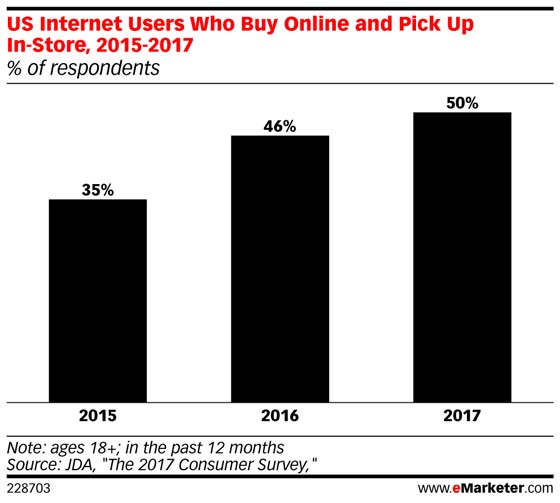The number of shoppers who buy online and pick up in store (BOPIS) continues to rise.
According to a survey by JDA Software Group, half of all internet users had bought online and then picked up the item in a store at least once in the preceding 12 months. That was up from just 35% in 2015.
BOPIS uptake reflects consumers’ omnichannel desires. While shopping online continues to grow rapidly, most consumers still prefer to do their shopping in-store.
JDA found that 54% of internet users said physical stores were their preferred channel, with the remainder split between a variety of digital channels.
More than ever, marketers are utilizing buyer behavior data, machine learning and artificial intelligence to predict what prospects are likely to do next. This Roundup of articles and interviews will help you understand how practitioners are including a predictive marketing approach in their overall strategy.

JDA’s survey found that two key reasons consumers pick up in store after buying online are speed and cost: Four in 10 respondents who had used BOPIS did so to avoid delivery charges, while one-third picked up their online orders in-store to get their package faster.
For retailers, of course, BOPIS provides additional opportunities to interact with consumers and potentially make additional sales. According to the JDA survey, 40% of customers who came in-store to pick up their online order sometimes made additional purchases in-store.
According to a November 2016 analysis by L2, which examined the types of website features implemented by US retailers, less than half (47%) of the companies studied offered online-to-offline (O2O) collection option.
by Monica Melton

